
Getting to Turin
By plane
- Turin International Airport "Sandro Pertini" Caselle - City of Torino
The airport is about 16 km from the city centre, about half an hour’s drive, and boasts a good transport service to the town centre, both by bus and train, as well as taxis of course. The airport has daily flights to major Italian and European cities.
www.aeroportoditorino.it
Getting to the airport:
• By bus – the centre of Turin is easily reachable in 40 minutes using the bus service
https://torino.arriva.it/
• By taxi – the taxi area is located at the exit of the arrivals terminal; in addition to the public service there is a personalized limousine/taxi service operational 24 hours.
www.taxi-torino.it
- Milano Malpensa International Airport
The airport is located about 100 km from Turin and offers international and intercontinental flights daily.
www.sea-aeroportimilano.it
Getting to Turin
• By bus - daily connections; duration of the trip about 2 hours
https://torino.arriva.it/linee-commerciali-torino-milano-malpensa/
By traino
Piemonte’s railway system has more than 2,000 km. Piemonte’s central location in relation to the most important European rail connections is also reinforced by the high speed line, already partly operational, which will be completed in the next few years.
Info:
www.trenitalia.com
www.italotreno.it
www.tgv-europe.com
By car
Piemonte is equipped with efficient and modern access routes and is reachable from all over Europe by means of five highways:
A32 Torino – Fréjus from France;
• A5 Torino – Monte Bianco from France and Switzerland;
• A4 Torino Milano – Venezia from central and eastern Europe;
• A6 Torino – Savona from Liguria and southern France;
• A21 Torino – Piacenza from central and southern Italy.
T1 Mont Blanc Tunnel
www.tunnelmb.com
T2 Gran San Bernardo tunnel
www.sitrasb.it
T4 Fréius tunnel
www.tunneldufrejus.com
Local public transport
GTT - Gruppo Torinese Trasporti - runs Turin’s urban transport service with an efficient network of buses, trams, railways (the city rail link is currently under construction and will further improve mobility in the province) and a futuristic, automatic underground line.
www.gtt.to.it
THE PIEMONTE REGION
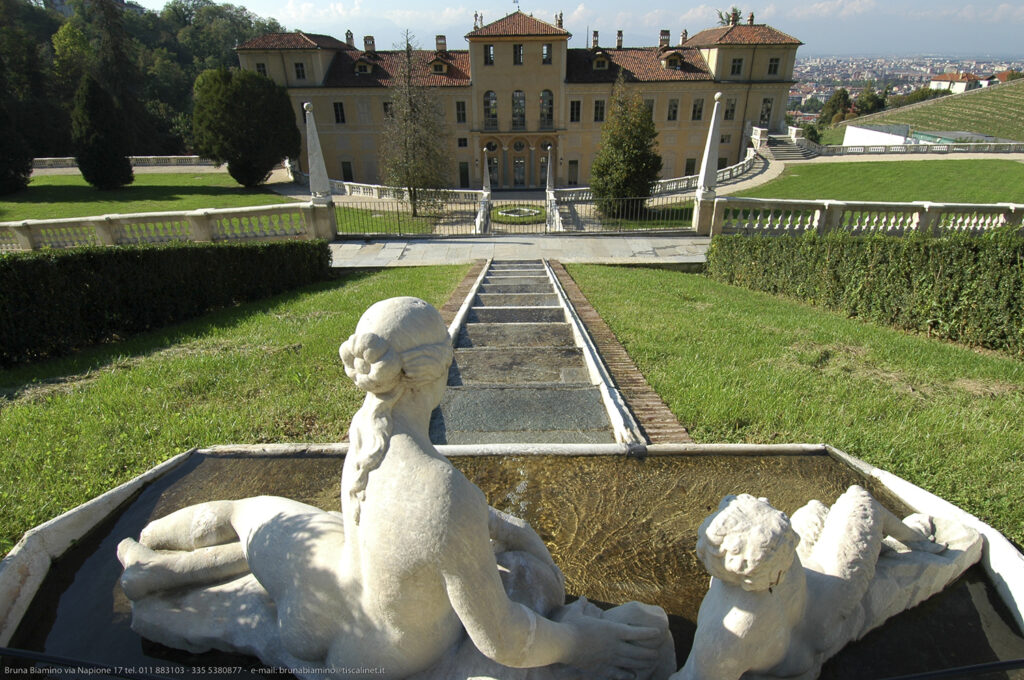
Queen Palace 
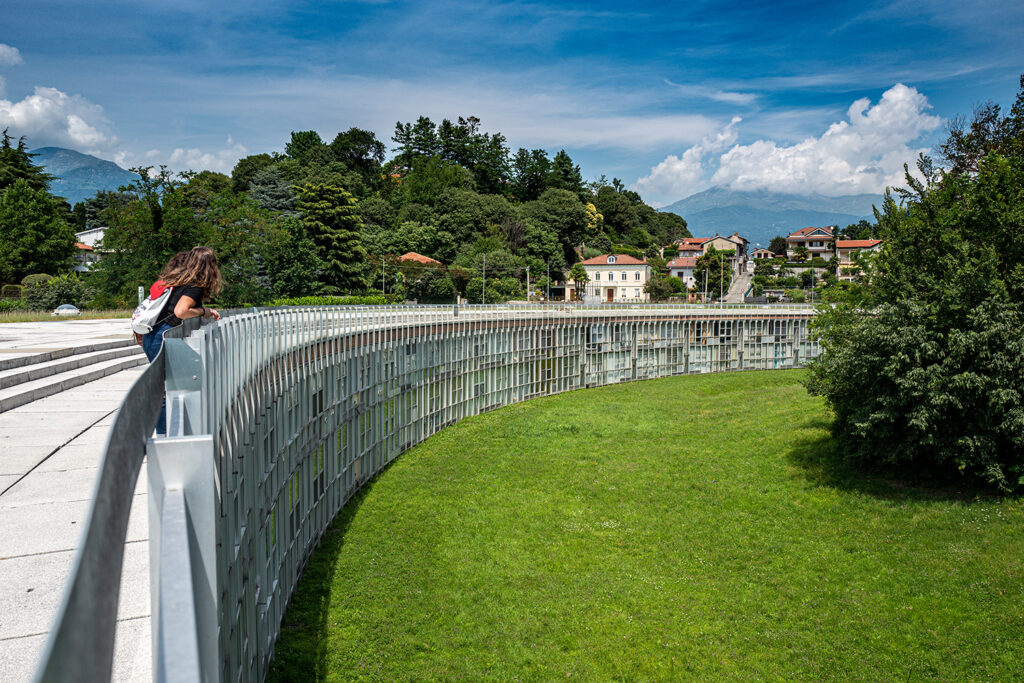
West Residential Unit 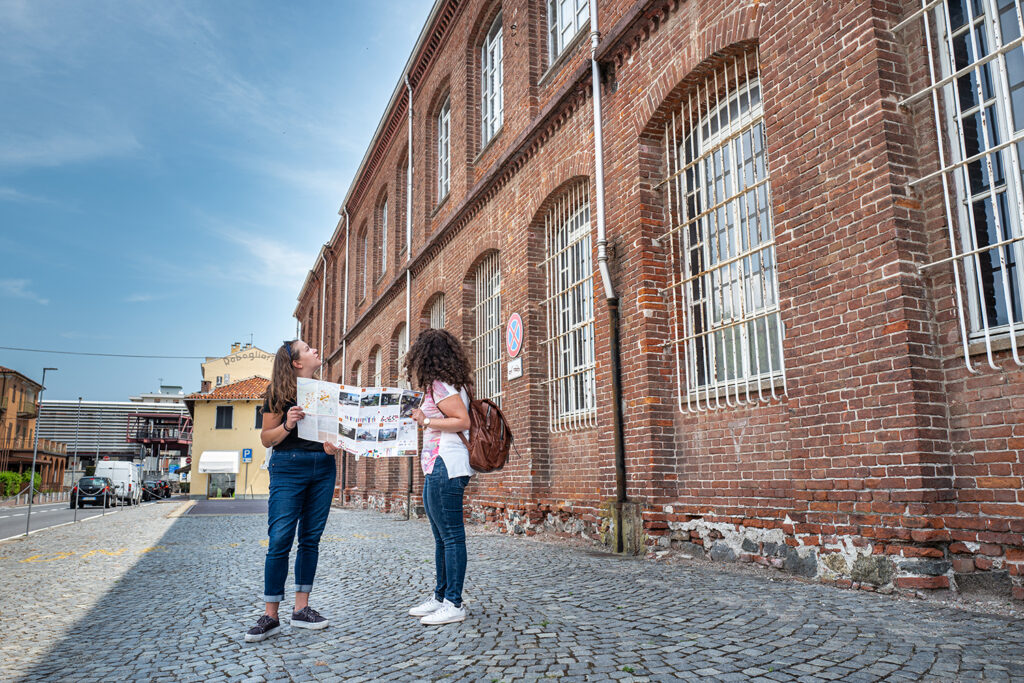

Stupinigi Palace 
Venaria Reale Palace 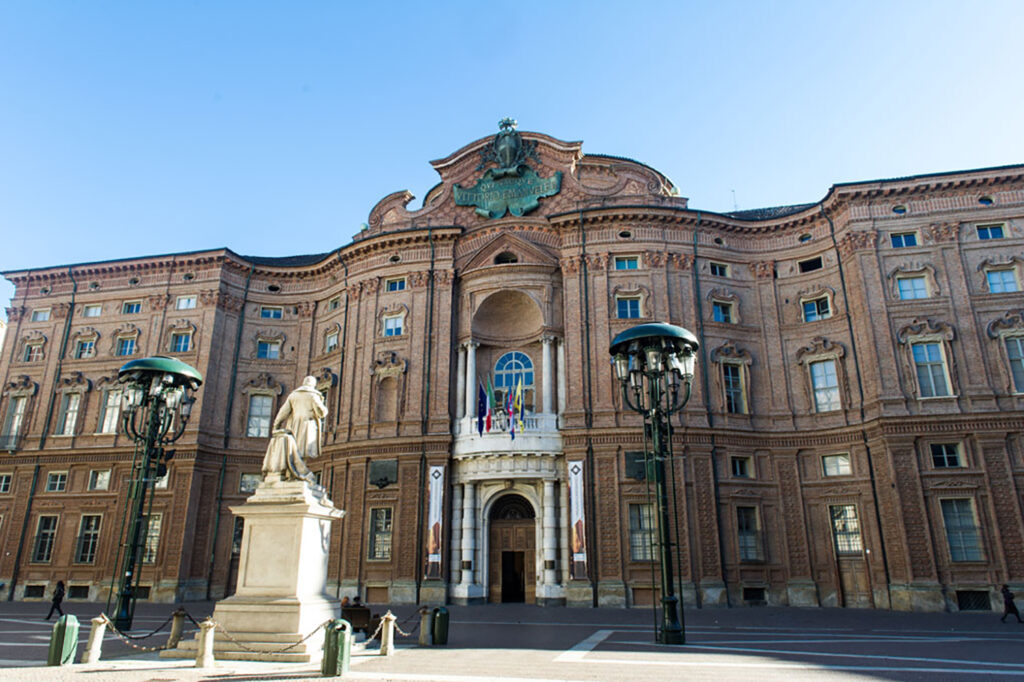
Carignano Palace 
Agliè Castle 
Valentino Castle 
Venaria Reale Palace 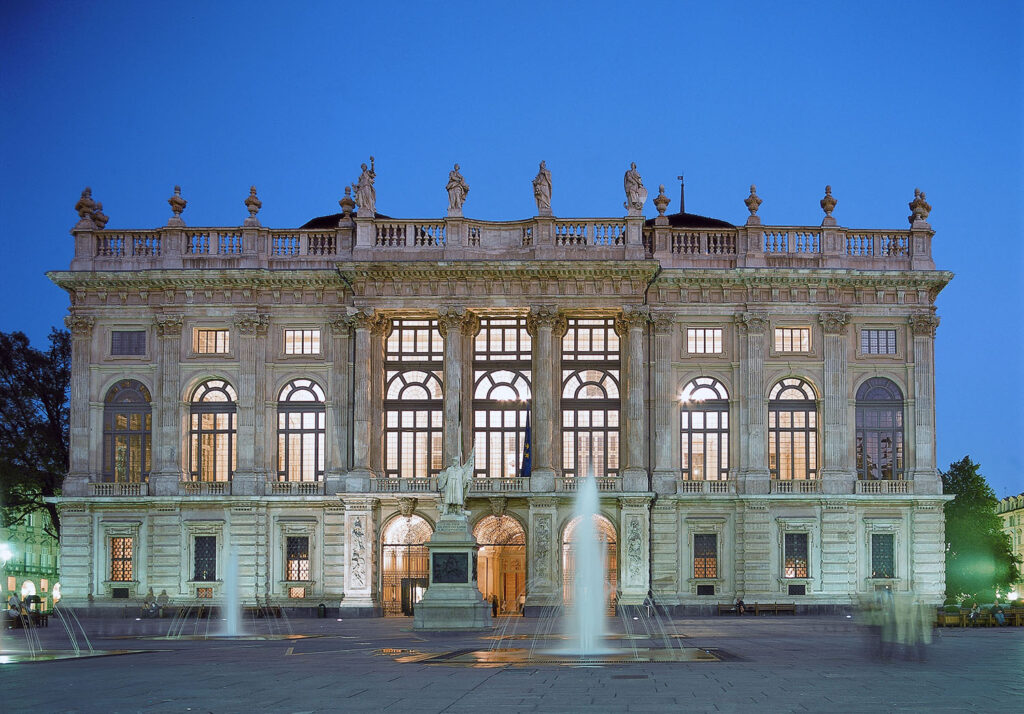
Madama Palace 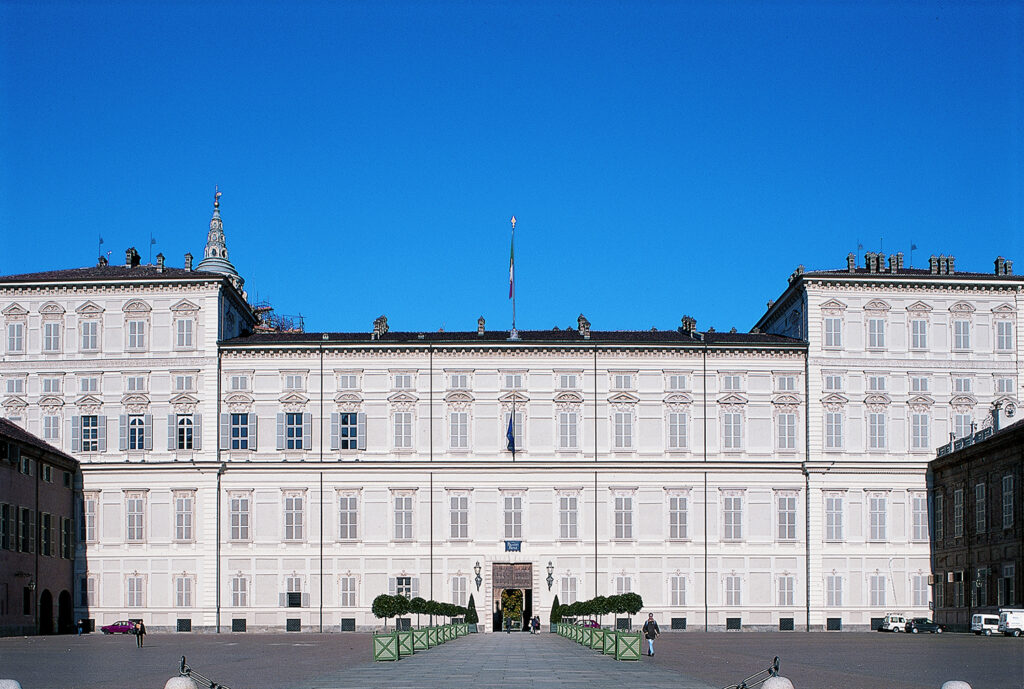
Royal Palace
The mountains
Impressive sights that are expressed in the white of the snow, in the green of the woods and pastures and in the signs of the traditional culture of the valleys. Snowing in Piemonte means skiing down the 2006 Olympic slopes. There are winter sports resorts renowned throughout the world, like the Vialattea with almost 500 kilometres of slopes. Piemonte has two national parks: Val Grande and Gran Paradiso, the first national park established in Italy.
The Langhe area and the hills
In June 2014, the landscapes of the Langhe-Roero and Monferrato were included among the cultural sites World Heritage of the Humanity.
Breathtaking is the word to describe the beauty of these hills and the Langhe area, synonymous with taste and prestigious wines. Wines such as Barolo and Barbaresco, Barbera, Dolcetto, Roero and Moscato are produced in these lands, famous for its castles, abbeys, historic villages and top-level food itineraries. The local cuisine, crowned by the famous white truffle, is extraordinary rich and appreciated all over the world.
The lakes
Two of the most famous Italian lakes are located here: Lago d’Orta and Lago Maggiore. The Lago Maggiore and the Borromean Islands have always been a favourite destination for tourists.
The lakes of Piemonte are gems of light and all you need is a boat to lose yourself in their spell.
WHAT TO DO
Turin City Sightseeing
With the red tourist bus, open to two floors, you can admire the thousand souls of the city. The 3 tours available last about one hour each and are illustrated by a multilingual digital audio system in Italian, French, English, German, Spanish, Russian, Chinese, Portuguese with the possibility of "hop on and off" at each stop.
It is possible to rent the bus for special events and pre-organized groups.
Merenda Reale®
Snack time can be transformed into a short journey through time: savor a Merenda Reale® in the historic cafes or in the cafes of the Royal Residences participating in the initiative.
You can choose between a steaming hot chocolate or a Bicerin, offered together with the irresistible "bagnati" and other chocolate specialties or - in the summer - the cold bisque, always accompanied by refined specialties strictly for dipping: torcetti, tongues of cat and canestrelli.
Magic Turin®
An intriguing and curious journey among disturbing faces, Masonic enigmas and esoteric symbols comes to life through the mystery of the Devil's Gate, the ghostly dragons, the legend of the alchemical caves, to culminate in the veiled woman holding the chalice of the Holy Grail, under the watchful eye of the most famous ghosts.
Made in Turin®
The most prestigious companies in the area open their doors for an exceptional journey to discover the methods and secrets that lead to the creation of a product of excellence: from the world of automotive to aerospace adventure, from the thrill of luxury to the temptations of food and wine up to the art of printing.
Extra VermouthTM
Extra Vermouth is not just a tasting, it is a ritual, a unique experience. A gastronomic pleasure and, at the same time, an opportunity to discover the flavored wine that appeared at the end of the 18th century at the court of the Savoy and in the shops of Turin's liquorists.
Shopping
The long path under the arcades created in the past for the walks of the House of Savoy in the city center has now become an absolute paradise for shoppers. The area traditionally dedicated to shopping is between via Roma, the heart and symbol of the city, and the pedestrian areas of via Carlo Alberto and via Lagrange where the shop windows of all the great names in fashion and jewelry shine. Via Garibaldi is younger and more trendy, via Po is more "intellectual" with bookshops and shops selling new and used records. Turin has many markets. The top is that of Porta Palazzo, the true multi-ethnic heart of the city. Nearby is also the Balôn, the historic flea market.
Nightlife
When the sunset warms the city and the lights come on, it's time to organize the evening: a cheerful aperitif in one of the many clubs in the center, a delicious dinner based on traditional or ethnic foods ... and then the Turin night awaits you!
Piazza Vittorio Veneto, Borgo Dora and the Roman Quarter - the real center of the city - host many trendy clubs: here art, food and design make the atmosphere even more sparkling, you can listen to classical, pop and jazz music strictly live, yes chatting, watching artistic performances, dancing until dawn. San Salvario also has an irresistible charm, the multi-ethnic district (between the Porta Nuova station and the Valentino Park), at the center of a major urban renewal project.
However, if your idea of the evening is more classic, and you feel a thrill every time the curtain rises, then let yourself be enchanted by the opera, the concerts, the dance, the great theater and the avant-garde that tread the scenes of the numerous theaters. : the Teatro Regio, the Lingotto Auditorium, the RAI Auditorium, the Carignano Theater.
WHAT TO SEE
Museums
You should discover the diversity of Turin through its many amazing museums, testifying to the history, culture, industry and internationality of the city: from the Museo Egizio (Egyptian Museum) – the world’s most prominent one after the museum in Cairo - to the National Museum of Cinema in the glorious setting of the Mole Antonelliana, from the Museum of Ancient Art at Palazzo Madama to the National Museum of the Italian Risorgimento in Palazzo Carignano. Torino’s industrial vocation has found its exhibition centre in the renovated MAUTO National Automobile Museum which tells of the city’s automotive history and the social issues related to it.
Turin is also a vital point of reference for contemporary art: works and installations produced over the last thirty years by internationally famous artists are placed for all to see in the open air or on display at several museums and foundations such as GAM-Gallery of Modern and Contemporary Art, the Museum of Contemporary Art at Rivoli Castle, the Sandretto Re Rebaudengo Foundation, the Merz Foundation and the Giovanni e Marella Agnelli Art Gallery.
Royal Residences
Known as the “Crown of Delights”, the group of castles built by the House of Savoy and recognised as a World Heritage Site by UNESCO in 1997 looks like a large crown when seen from above. The crown is metaphorical but the delights are real. Right in the centre, in Piazza Castello, there are the majestic Palazzo Reale - which, with the Savoy Gallery, the Royal Armoury, the Royal Library and the Archaeological Museum, form the “Royal Hub” – Palazzo Madama and Palazzo Carignano.
Along the River Po is Valentino Castle, built by Christine of France in the French style and now housing the Faculty of Architecture of Turin Polytechnic. Just a short way from the centre, the hill embraces Villa della Regina, surrounded by Italianate gardens with pavilions, fountains and agricultural areas. The “crown” is completed by a wonderful collection of castles and residences in the surrounding areas. The incredible Royal Palace of Venaria now hosts major events, exhibitions and concerts in its magnificent interiors and spectacular gardens. A favourite spot of the Savoy family for sumptuous feasts and solemn weddings was the Stupinigi Hunting Lodge, modeled on the style of contemporarily built Central European residences.
Main places of worship
Since 1578, the Duomo – the only example of Renaissance art in the city – has held the Holy Shroud, the Cloth claimed to have wrapped the body of Christ. Devotees can visit the corresponding Museum in the crypt of the Church of the Santissimo Sudario. Not only are Turin's churches places of worship, they are also fine examples of architecture and art, mainly in baroque style: the church of San Lorenzo, the first work commissioned of Guarino Guarini by the Court of Savoy, the twin churches of Santa Cristina and San Carlo in the Piazza of the same name, the impressive church of San Filippo by Juvarra and the Basilica della Consolata – much loved by Turin's citizens – are well worth a visit not just by churchgoers. The new church of Santo Volto – by the architect Botta – is an admirable example of use of land reclaimed from former industrial areas.
TASTE TURIN
A trip to Turin also means a journey into taste, to savour with intimate pleasure in a medley of sensations.
Here the appetisers come in an infinite variety based on meat, fish, vegetables, eggs, salami and cheeses, all obviously to be served with “grissini”, invented in the 17th century for Prince Victor Amadeus II of Savoy. Any first course has to include “agnolotti”, meat filled pasta which is dressed with either gravy from the roast, or butter and sage, ragout sauce or meat broth. Not to be missed is the wide range of high quality handmade cheeses coming from our Alpine valleys. And of course, all of this washed down with the great Piedmontese red and white wines: Barolo, Barbaresco, Barbera, Arneis and many more.
However, a true dinner in Turin must be preceded by the fun ritual that takes place late every afternoon in the cafés, wine bars and clubs along the river... the aperitif!
A cocktail or a glass of vermouth to go with sandwiches, cold cuts and local cheeses, pasta and risotto, multiethnic specialities, and the evening is ready to start!
Historical cafès
If then, in the middle of the day, strolling beneath the elegant colonnades of the centre, your eye is caught by the inviting windows of the historical cafés, give in to the temptation of the hot drinks like “bicerin” based on coffee, chocolate and cream, “zabaione” and hot chocolate, in the café rooms decorated with mirrors, wood panelling and satin upholstery, where the atmosphere of the Risorgimento period can be experienced.
Chocolate
In Turin, in the 18th century, chocolate began to be processed and solidified, creating delicious products for satisfying the Court of Savoy and this led to the “invention” of gianduiotti, chocolates, pralines, cakes, biscuits, “pinguino” ice-creams and hot chocolate: world famous specialities which make Turin the Italian capital of traditional chocolate.
Photos and Information from Turismo Torino e Provincia

